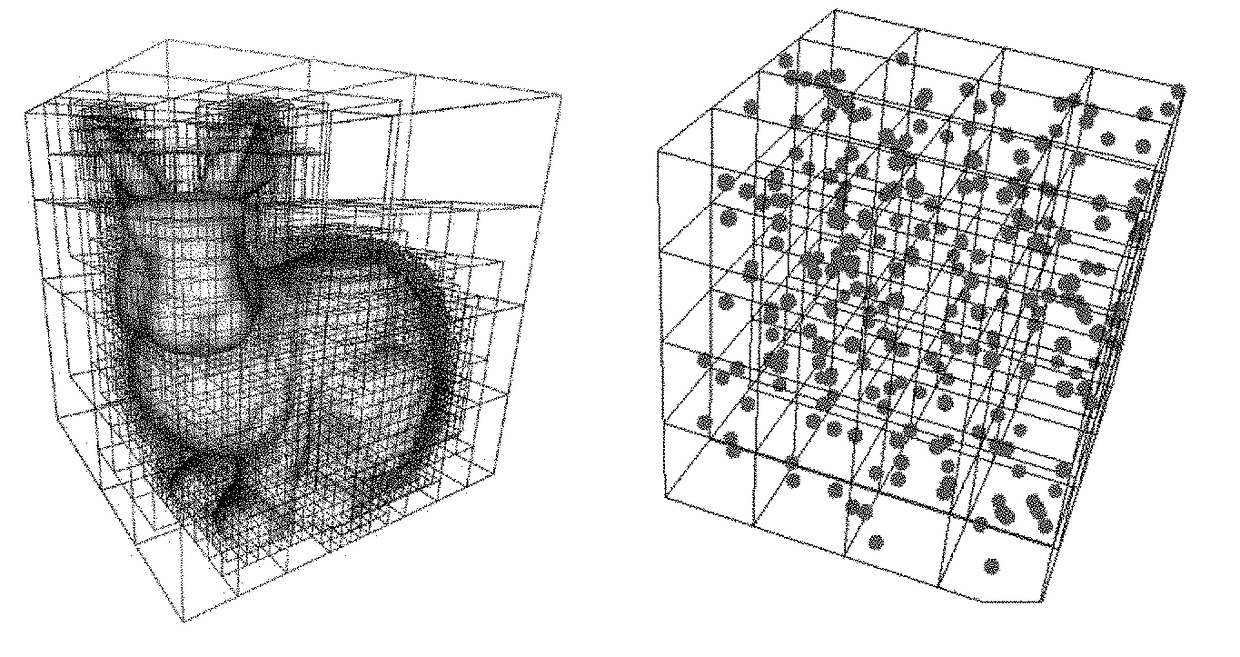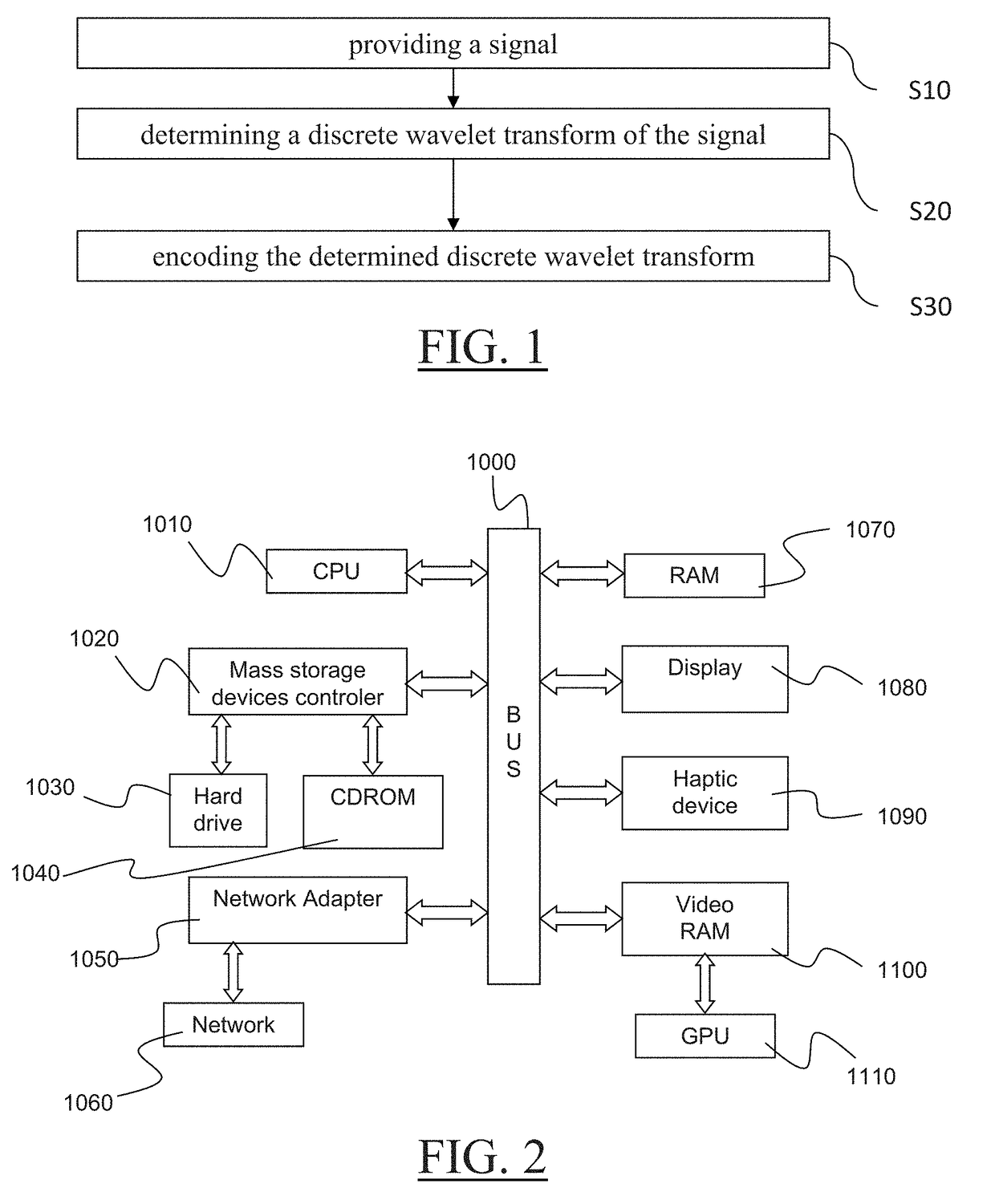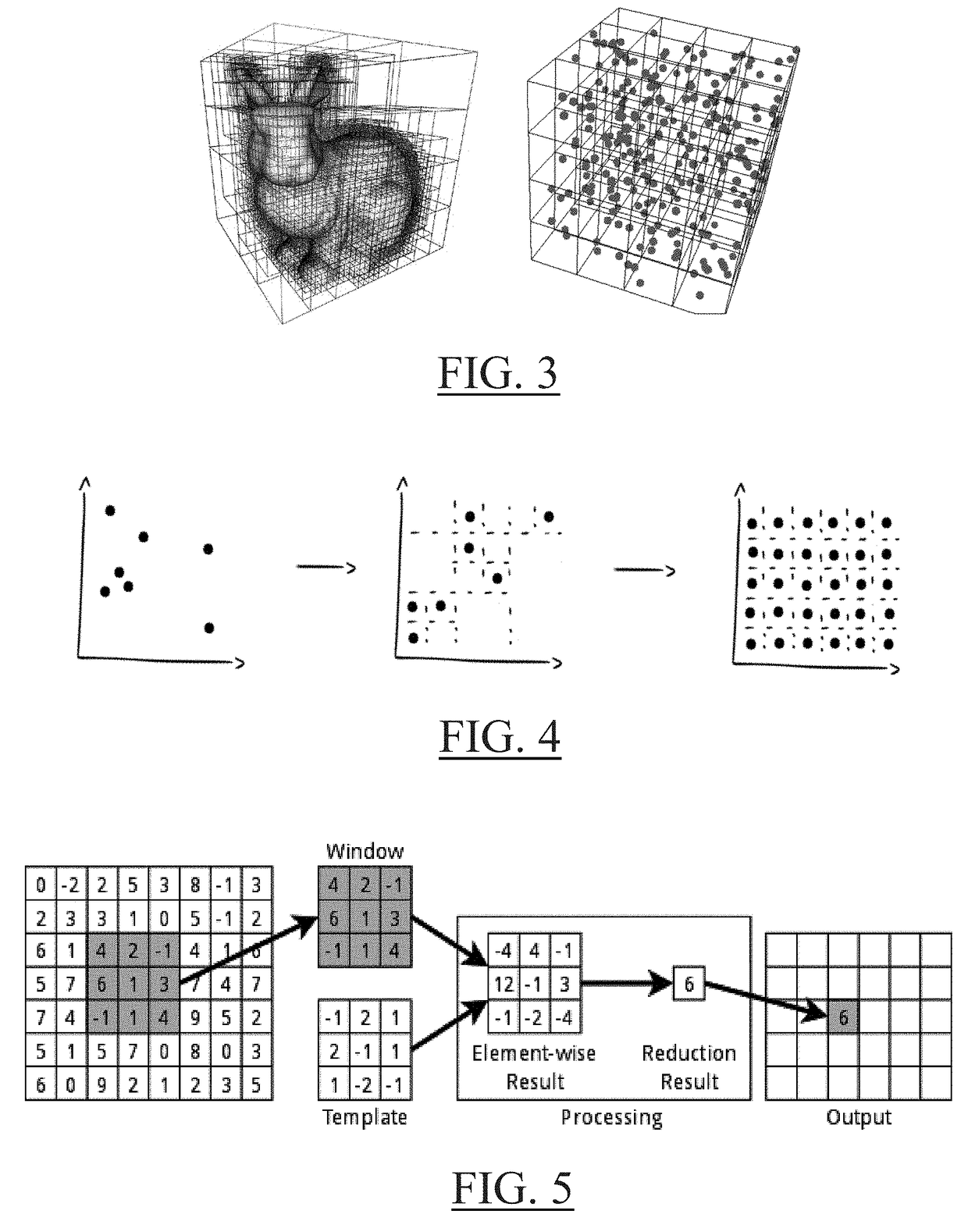Compressing a signal that represents a physical attribute
a physical attribute and signal technology, applied in the field of computer programs and systems, can solve the problems of insufficient efficiency, still providing valid, difficult to compress, etc., and achieve the effect of less memory spa
- Summary
- Abstract
- Description
- Claims
- Application Information
AI Technical Summary
Benefits of technology
Problems solved by technology
Method used
Image
Examples
Embodiment Construction
[0039]With reference to the flowchart of FIG. 1, it is proposed a computer-implemented method for compressing data representing values of a physical attribute in a predetermined space (i.e. processing said data such that the size of the data on memory storage is reduced, e.g. at least statistically, e.g. while losing relatively little or no information). The method comprises providing S10 a signal representative of values of the physical attribute each at a respective leaf cell of a hierarchical subdivision of the predetermined space. The method also comprises determining S20 a discrete wavelet transform of the signal with a predetermined basis of wavelet convolution filters. The discrete wavelet transform is performed based on the data structure of the signal, notably in accordance with the hierarchical subdivision structure. In other words, the structure of the recursion underlying the discrete wavelet transform follows the structure of the hierarchical subdivision. Yet in other w...
PUM
 Login to View More
Login to View More Abstract
Description
Claims
Application Information
 Login to View More
Login to View More - R&D
- Intellectual Property
- Life Sciences
- Materials
- Tech Scout
- Unparalleled Data Quality
- Higher Quality Content
- 60% Fewer Hallucinations
Browse by: Latest US Patents, China's latest patents, Technical Efficacy Thesaurus, Application Domain, Technology Topic, Popular Technical Reports.
© 2025 PatSnap. All rights reserved.Legal|Privacy policy|Modern Slavery Act Transparency Statement|Sitemap|About US| Contact US: help@patsnap.com



